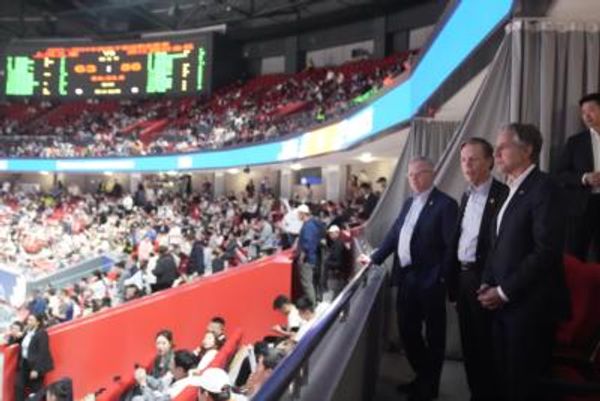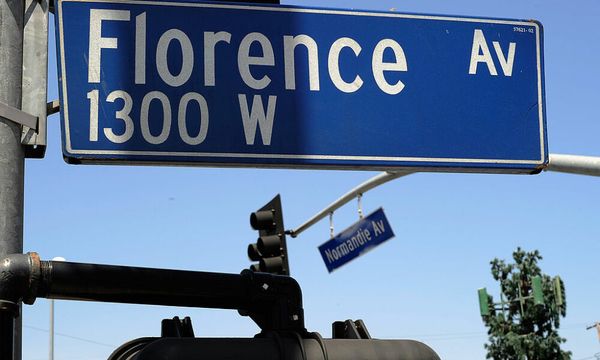
In politics it’s dangerous to be caught changing your mind in public. In political reporting, it can be more dangerous still. Over this past weekend, we’ve watched Australia’s commentariat grapple with the fact that the two absolute certainties it brought to the campaign are turning out dead wrong.
Pre-election, the groupthink of Australia’s political press corps revolved around two immutable beliefs: Morrison? Master campaigner with an almost magical ability to divine the narrow goat track to victory; Albanese? Nice guy, but not really up to it, is he?
It’s taken five weeks of campaigning for the first handful of commentators to wonder why those beliefs have crashed into the stubborn refusal of polling to demonstrate that the Australian people agree.
Those beliefs delivered the traditional media’s campaign a bad start. The first-week “gaffe” by Albanese, “pounced on” by Morrison, gained traction because it reinforced everything the press corps thought they knew about the two men.
They brought the same “gaffe-pounce” narrative to the real wages debate this past week, at least until it was brought up short by a more permanent campaign truism: never get in the way of voters and a pot of money.
Nine media has given air to appalling transphobia dog whistles out of a conviction, encouraged no doubt by the Prime Minister’s Office, that master campaigner Morrison sees something in the electorate’s inner psyche that ordinary mortals miss.
The beliefs — and the failures of reporting they’ve generated — demonstrate just how deep System 1 thinking has penetrated journalism. Identified by Nobel Prize-winning economist Daniel Kahneman, System 1 thinking is what we all usually do: instantaneous thought shaped by instinct and prior learning. (As distinct from the more deeply thoughtful System 2, which is what we think we all do.)
At its best, it’s the skill of pattern recognition that journalists bring to new events to power necessarily quick news judgment for a fast-moving news cycle. At its worst, it’s seeing what you expect to see. When you expect the “gaffe-pounce” dynamic, it’s irresistible to hurry it along with gotcha questions and prodded responses.
In the AFR on Friday, Phil Coorey’s weekly column demonstrated that even some of the best gallery analysts can be trapped in “gaffe-pounce” thinking: “By any objective assessment, Albanese has had a poor campaign … Apart from his period in isolation, he has pretty much averaged a gaffe per week, but the polls have stayed solid. By comparison, Morrison has campaigned well in that he has been disciplined and relentlessly on-message.”
Those pesky voters! Good news: Bertolt Brecht has The Solution:
… Would it not be easier
In that case for the government
To dissolve the people
And elect another?
So far, the commentariat is readier to jettison its confidence in Morrison’s skills than admit it was wrong about Albanese.
In The Australian on the weekend, Paul Kelly asked in a headline: “The Albo experiment: is he up to the job?”, answering deep in the text with a tentative: “Maybe.” The paper’s foreign policy guru, Greg Sheridan, grumbled that he guessed Albo would be OK, probably better than Labor leader Doc Evatt was in the 1950s. High praise, by Oz standards.
The failure of this entrenched narrative was not (or not only) that it misjudged the two men. It missed the fundamental changes within the media environment in which this election happens to fall.
Hurried on by the pandemic, the media mix — traditional, digital, social — has changed so radically that this election is dramatically different from 2019, fought in the last days of linear free-to-air television mixed with peak Facebook.
This election, it’s a far more contested media space. Facebook is a more discredited and age-constrained platform (and algorithmically hostile to political news). Linear television has ceded ground to streaming.
Political news now comes all jumbled up across new digital media (including youth-focused media), TikTok, YouTube, WeChat, Instagram, Twitter. In his defence of Nine’s “The Great Debate”, Chris Uhlmann (usually a social media critic) revealed just how legacy linear television has become: “YouTube accounts hit 814,000 engagements, Facebook, 1.2 million views and 250,000 views on Twitter.”
The then largely unknown Morrison persona worked in the media environment of 2019. Albanese has built a career out of being underestimated. His more humble, more scaled-back persona seems a better fit for campaigning today.







